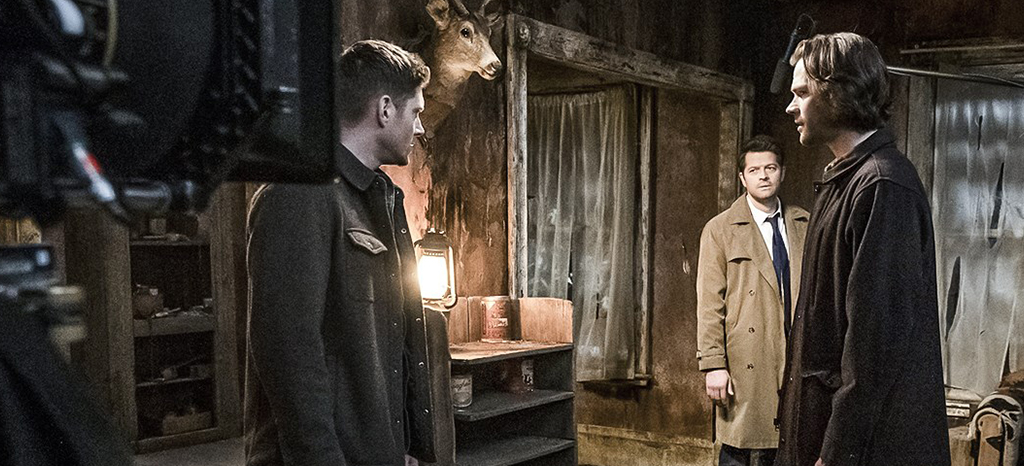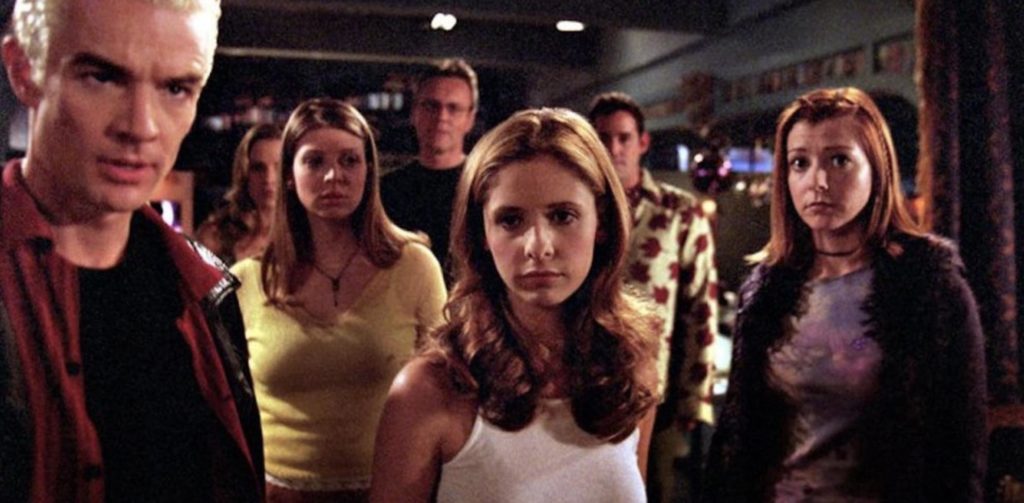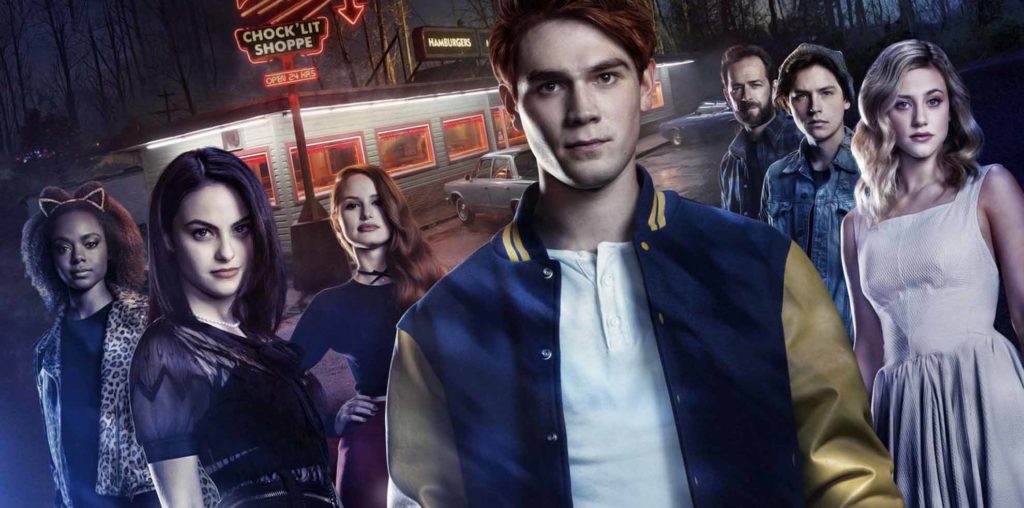
Sydney
June 21-22, 2025
Sydney Showground Olympic Park



Buffy the Vampire Slayer; Angel; Charmed; Dawson’s Creek; Gilmore Girls; Smallville; Supernatural; The 100; The Vampire Diaries; Gossip Girl; Riverdale and Arrow. What do all of these TV shows have in common? Besides being some of the most iconic programs of a generation or two and the source of a great number of Supa-Stars over the years, they were also all the products of one network: The CW.
Here in Australia most fans probably don’t pay much attention to where these American shows come from. Over here we have to watch them through a variety of different sources, like Foxtel, Binge, Netflix, etc. Or hey, maybe you were lucky enough to have seen a time when some of these shows actually aired on free-to-air TV (at 11pm, before being cancelled after three weeks).
Due to this, most Australian fans and mainstream audiences would be unaware that some of their favourite shows were spawned by the same source. Sadly though, while once a pop-culture juggernaut of TV programing, the CW’s fortunes have become less favourable in recent years, with a change in ownership and a shift in focus leading to long-standing favourites coming to an end and fledgling new programs getting the axe. So as the network enters a new era, let’s look back at its two-decade golden age, during which time it dominated the pop-culture landscape without you even knowing.
 The CW actually originated as two separate networks – The WB and UPN – which launched within a week of one another in 1995. Both networks struggled at first, but eventually found success with programs such as Buffy, 7th Heaven and Dawson’s Creek on The WB and Star Trek: Voyager and America’s Next Top Model on UPN. The WB, in particular, began to target a younger demographic, due to the success of Buffy, and launched shows such as Charmed, Felicity and the Buffy spin-off Angel, leading to a reputation as a home for young adult programming.
The CW actually originated as two separate networks – The WB and UPN – which launched within a week of one another in 1995. Both networks struggled at first, but eventually found success with programs such as Buffy, 7th Heaven and Dawson’s Creek on The WB and Star Trek: Voyager and America’s Next Top Model on UPN. The WB, in particular, began to target a younger demographic, due to the success of Buffy, and launched shows such as Charmed, Felicity and the Buffy spin-off Angel, leading to a reputation as a home for young adult programming.
This reputation would prove their undoing however, as the network attempted to bring in a broader audience, but with little success. Despite these failings, the turn of the millennium would see The WB launch two of its longest-running shows, which would outlast the network itself: First Smallville in 2001, followed by Supernatural in 2005. 2000 also saw the debut of Gilmore Girls, with Sabrina the Teenage Witch also joining the WB fold, after originating on the American ABC. However, it was a bit of a trade-off – a witch for a slayer – with Buffy moving across to UPN in 2001, where it would stay for its final two – and arguably best – seasons.
By this point the writing was already on the wall for The WB, as they continued to drop in the ratings, leading to cancellations while also failing to find new audience draw cards. Change was on the horizon, and from the ashes of the old regime, something new would rise.
 In 2006 it was announced that both The WB and UPN would be shut down and replaced with a new network, The CW, with many flagship programs transferring over from their predecessor networks. These included The WB’s Smallville, in its sixth season by that point, and Supernatural, which had only started the previous year. Like its predecessors, the newly minted network floundered for its first few years, struggling to find its audience and falling short in the ratings, with lots of lay-offs, cancellations and corporate restructuring as a result.
In 2006 it was announced that both The WB and UPN would be shut down and replaced with a new network, The CW, with many flagship programs transferring over from their predecessor networks. These included The WB’s Smallville, in its sixth season by that point, and Supernatural, which had only started the previous year. Like its predecessors, the newly minted network floundered for its first few years, struggling to find its audience and falling short in the ratings, with lots of lay-offs, cancellations and corporate restructuring as a result.
However, its fortunes finally started to change in the next decade, when new leadership saw a shift in strategy and a focus on the 18-34 target demographic. 2009 saw the debut of The Vampire Diaries, based on the novel series of the same name, which would spawn a shared universe with its two spin-off shows, The Originals and Legacies. Arrow burst onto the scene in 2012, based on DC’s Green Arrow character, which brought back the young male viewers that had been lost when Smallville had ended the previous year.
There was also a new version of the improv comedy game show, Whose Line is it Anyway?, which brought a much-needed injection of comedy back to the network, and continues to be a CW staple to this very day.
Jane the Virgin, Nikita and The 100 all proved to be other big success for the network, but it was The Flash, a spin-off from Arrow, which really blazed a path forward. This was the first of many spin-offs that would be launched in the coming years, building what would come to be known as the Arrowverse, a shared universe that would be the jewel in the network’s crown throughout the 2010s. At its height, The CW aired six Arrowverse shows a week – Arrow, The Flash, Supergirl, DC’s Legends of Tomorrow, Batwoman and Black Lightning – leading the network to become the unofficial home of DC on TV, alongside animated spin-offs Vixen, Freedom Fighters: The Ray, and Constantine: City of Demons on their digital streaming platform CW Seed.
 Outside of DC, The CW also found bolstered numbers thanks to another comic book adaptation, Riverdale, based on the stable of characters published by Archie Comics. Running from 2017 to 2023, this has become one of the network’s most iconic non-Arrowverse shows of the 2010s. With its mix of young adult drama, mystery and fantasy, Riverdale crafted a unique feel that many others have tried to imitate. It also spawned two spin-off shows – The Chilling Adventures of Sabrina and Katy Keene – creating yet another shared universe for the network.
Outside of DC, The CW also found bolstered numbers thanks to another comic book adaptation, Riverdale, based on the stable of characters published by Archie Comics. Running from 2017 to 2023, this has become one of the network’s most iconic non-Arrowverse shows of the 2010s. With its mix of young adult drama, mystery and fantasy, Riverdale crafted a unique feel that many others have tried to imitate. It also spawned two spin-off shows – The Chilling Adventures of Sabrina and Katy Keene – creating yet another shared universe for the network.
With a slew of popular programs, many based on licensed properties, and no fewer than three shared universes in place, the late 2010s really seemed like a pinnacle for The CW. Sure, it had its critics and not everyone was a fan of the network’s predominately young adult target audience, but there’s no denying just how many fan-favourite shows were produced by the network in this era. Sadly though, these fortunes wouldn’t last forever and slowly but surely the bubble began to show signs of bursting.
The Arrowverse claimed its highest achievement with the five-part 2019-2020 crossover event, Crisis on Infinite Earths, but with Arrow coming to an end not long after, and with productions shut down due to the Covid-19 pandemic, things were changing once again.
Speaking of Covid disruptions, Supernatural had only two episodes left to be made for its fifteenth and final season when the production was brought to a halt. The last vestige of the WB era, Supernatural had become a juggernaut of the pop-culture landscape, with a dedicated fanbase like no other.
 Thankfully the network was committed to ensuring those final episodes were completed, even if changes had to be made in order to adhere to Covid restrictions. Fans may not have got to see the ending as originally intended, but at least they did get an ending. However, the loss of both Supernatural and Arrow in the same year left some gaping holes in the network’s schedule that would prove difficult to replace.
Thankfully the network was committed to ensuring those final episodes were completed, even if changes had to be made in order to adhere to Covid restrictions. Fans may not have got to see the ending as originally intended, but at least they did get an ending. However, the loss of both Supernatural and Arrow in the same year left some gaping holes in the network’s schedule that would prove difficult to replace.
Still, the network continued to produce new programmes, with shows such as Kung-Fu, Nancy Drew, Walker (starring Supernatural’s Jared Padalecki), and the DC shows Naomi, Stargirl, Superman & Lois hitting the airwaves. The latter two were actually co-produced by HBO Max, as part of a new deal between the two.
You see, from 2012 until 2019 The CW had a deal with Netflix and made a tidy sum selling the shows to the streaming service. However, the network’s parent companies, WarnerMedia and CBS, decided they wanted to create their own streaming services, with all of their content going there. For a time, they had a good thing going, with shows airing on The CW, before appearing on HBO Max. Just a few short years later though, word got out that those parent companies were in the process of selling The CW, with the network finally being sold in late 2022.
In anticipation of this, The CW announced the cancellation of a whole slew of shows earlier that year, including most of the Arrowverse, save for The Flash and Superman & Lois. At this point, it seemed pretty obvious that The CW as we knew it wasn’t long for the world, with only a handful of scripted shows being kept by the new owners, and with some of those, including The Flash and Riverdale only being renewed for a final season.
 Amid all of these cancellations, a few new shows still debuted – most notably the Supernatural prequel, The Winchesters, and the DC show, Gotham Knights – however, neither of those shows had the quality or positive reception of earlier CW shows and they were both cancelled after a single season.
Amid all of these cancellations, a few new shows still debuted – most notably the Supernatural prequel, The Winchesters, and the DC show, Gotham Knights – however, neither of those shows had the quality or positive reception of earlier CW shows and they were both cancelled after a single season.
It’s since emerged that The CW’s new owners have shifted their focus to producing cheaper, mostly unscripted content, while also acquiring programs from overseas. They’ve also decided to focus on older audiences, given that their traditional young adult audience are now consuming most of their TV through streaming services.
As of mid-2023 The CW only has six ongoing scripted dramas, with two of those – Riverdale and Nancy Drew – concluding in the coming months. Of the four that will remain after that, the only ‘genre’ show will be Superman & Lois, which will be running a shorter (possibly final) season, with a reduced budget. The other three spots will be held by Walker, as well as the sports dramas, All-American and All-American: Homecoming. It’s a far cry from the glory days when The CW’s schedule was dominated by superheroes, fantasy and magic.
Looking back, The CW of the 2000s and 2010s occupies a very special place in our collective pop culture consciousness, the roots of which go all the way back to those days on The WB. We live in an age where we’re spoiled for choice when it comes to TV content, but for all the premium streaming dramas at our fingertips, it feels like we’re missing something. Some indefinable quality that was inherent in so many of those CW shows that we took for granted.
For decades The CW and its predecessors produced shows that embedded themselves in the zeitgeist and paved the way for all that followed, all for little to no recognition. Not every show was a winner, but the sheer number of iconic shows that called the network home is nothing short of impressive and it really deserves more recognition. It’s sad to see the end of this golden age of The CW, but this isn’t the first time the network has been reinvented and it probably won’t be the last. No matter what this new chapter holds for The CW, let’s offer our thanks and appreciation for its years of service as an unsung hero of pop culture.






